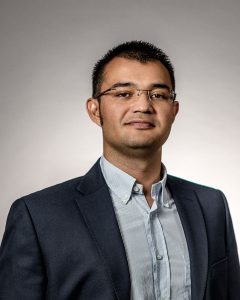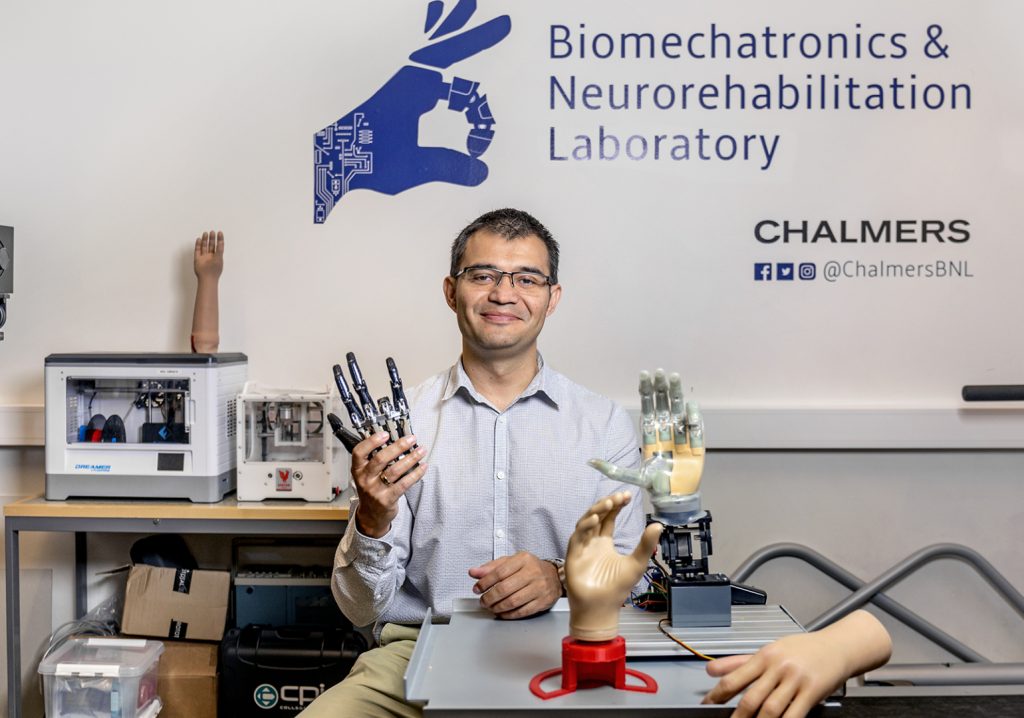This engineer has developed a new bionic limb to reduce pain and allow patients greater control of movement.
The pioneering study, published last week in Science Translational Medicine, is hoped to bring about groundbreaking improvements for people who use bionic limbs.
Using a combination of surgical reconstruction, a novel neuromusculoskeletal interface, and artificial intelligence algorithms to decode motor commands, this new technology allows a patient to have intuitive movement of each finger of their bionic hand.
The mind behind this breakthrough is Professor Max Ortiz Catalán, Founding Director of the Centre for Bionics and Pain Research (CBPR); Professor of Bionics at Chalmers University of Technology in Gothenburg, Sweden; and now Head of Neural Prosthetics Research at the Bionics Institute in Melbourne.
“We enhanced the nerve and muscle connections that would normally be found in the arm by taking the patient’s peripheral nerves that were severed by the amputation, splitting them, and then reconnecting them to a different muscle target in which we also placed implanted electrodes,” explains Ortiz Catalán.
According to the Bionics Institute, this is the first documented case of an individual with an amputation above the elbow who is able to control a bionic hand as if it was their own.

Passion for improving patient outcomes
Ortiz Catalán says these surgical and engineering advancements will help to resolve a number of problems that arise from the use of prosthetic limbs.
“Prosthetic limbs are commonly attached to the body by a socket that compresses the residual limb – a process which is mechanically unstable and often causes discomfort,” he says.
“Every time a person moves, it causes friction on the limb between the socket and the skin on the residual limb. Many patients don’t want to wear a prosthetic limb all day because it can be very uncomfortable and sometimes painful.
“All of those issues disappear when you put an implant in the skeleton to create an extension of the body’s own frame to attach the prosthesis, and it’s much more comfortable.”
Another major benefit of the more recent innovation is that it improves a patient’s ability to control movements.
“We realised that what people want is to have more reliable control over their prosthesis. If they can’t do that, and the prosthesis is uncomfortable to wear, they simply won’t use it and it won’t help to improve their quality of life.”
Taking opportunities
Mexican-born Ortiz Catalán has been based in Gothenburg, Sweden for the past 16 years where his career turned towards bionics. He discovered that Gothenburg is the birthplace of osseointegration.
“When I moved there, osseointegration was being used for the mechanical attachment of limb prosthesis. If you put an implant inside the bone, bone cells will grow directly onto it. With other materials, scar tissue will form, making the interface mechanically unstable,” says Ortiz Catalán.
“I reached out to Dr Rickard Brånemark, the founder of Integrum, the first spin-off company to commercialise this technology, and asked if they would be interested in moving from pure mechanics into biomechatronics. We had a meeting and it was from there that I entered the field. I took a device that was purely mechanical and incorporated electronic elements to make it interface with the nervous system, so the users could gain control over their prostheses.
Guided by a sense of purpose
Ortiz Catalán now splits his time between Australia and Sweden, making the best out of both research worlds. Wherever in the world he is working, he’s guided by a strong sense of purpose.
“I focus my efforts on restoring function. I’m a really pragmatic person. My dream in life wasn’t to become a professor. I became a professor because I realised it gave me the freedom to research and develop my own ideas to improve people’s lives,” he says.
“We spend most of our lives working, so you may as well enjoy what you do. When my students ask me for career advice, I tell them to do what you’re good at and do what you love, and then find a way to get paid for it. It’s easier said than done, but it’s fantastic if you can find that.”
